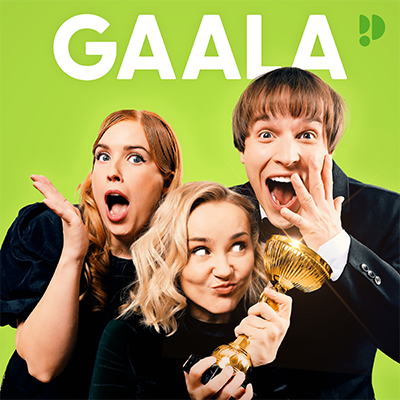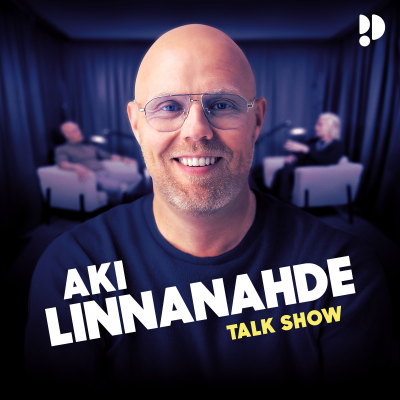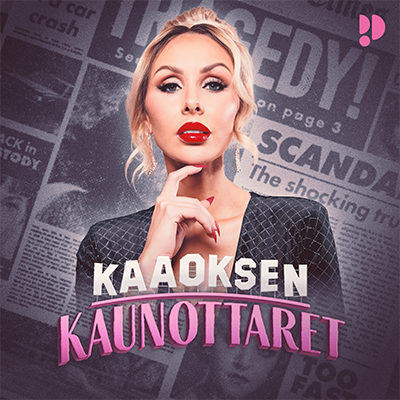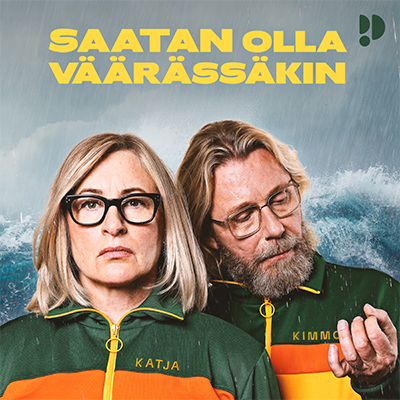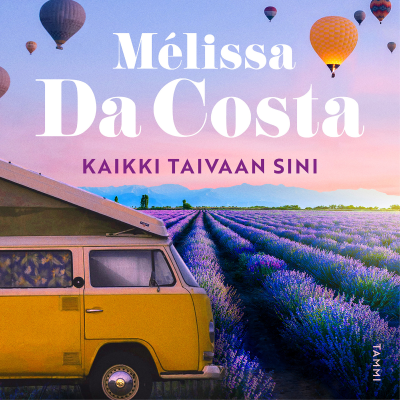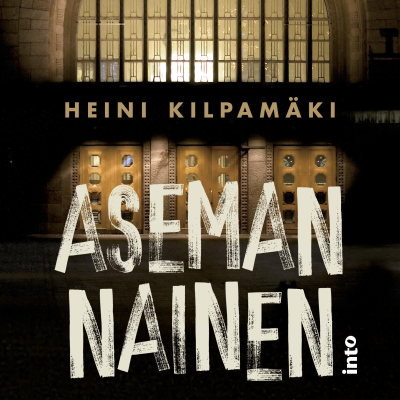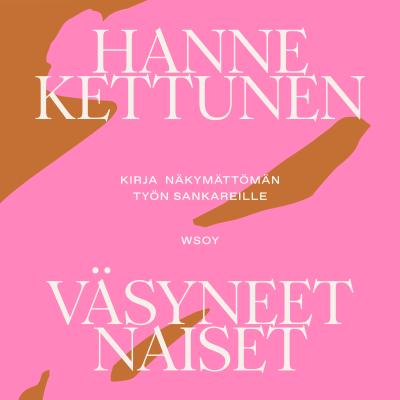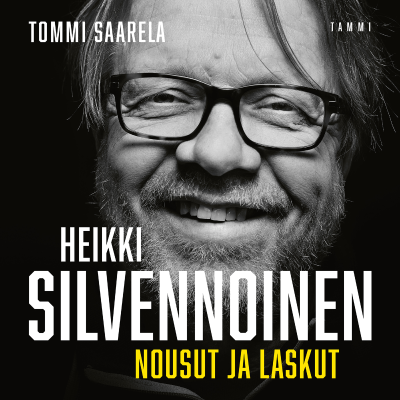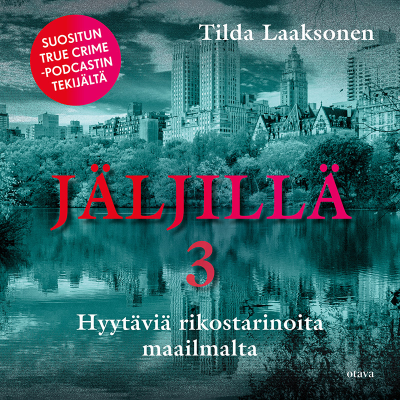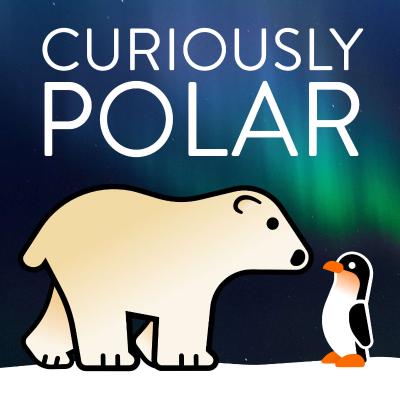
Curiously Polar
Podcast by Chris Marquardt
The Arctic and the Antarctic are privileged locations for observers interested in understanding how our world is shaped by the forces of nature and the workings of history. These areas have inspired countless humans to undertake epic expeditions of discovery and have witnessed both great triumphs and miserable defeats. As a planetary litmus paper it is at the poles we can detect the effects of natural oscillations and human activities on the global ecosystems.
Aloita 7 vrk maksuton tilaus
Kokeilun jälkeen 7,99 € / kuukausi.Peru milloin tahansa.
Kaikki jaksot
166 jaksotTranscription of this episode [https://curiouslypolar.com/media/cp168_transcript.html] | Watch this on video [https://tfttf.com/curiouslypolarvideo] | Buy us a coffee: Chris [https://ko-fi.com/chrismarquardt] / Henry [https://www.buymeacoffee.com/aguycalledpaul] / Mario [https://www.buymeacoffee.com/polarmario] showThis episode is a joint production of Curiously Polar and Polar Geopolitics [http://www.polargeopolitics.com]. Joining today are Klaus Dodds [https://pure.royalholloway.ac.uk/en/persons/klaus-dodds], Professor for Geopolitics and Executive Dean for the School of Life Sciences and Environment at Royal Holloway, and Eric Paglia [https://www.kth.se/profile/paglia], postdoctoral researcher in the SPHERE project at KTH Royal Institute of Technology and producer and program host of the podcast Polar Geopolitics. SCRAMBLE FOR THE NORTH POLE Not only since 2007, when a submersible planted the Russian flag [https://www.theglobeandmail.com/news/world/russias-new-claim-to-north-pole-puts-pressure-on-canada-expert-says/article25838454/] at the North Pole, the question of who owns the North Pole are a widespread topic discussed in several media outlets around the globe. With a large portion of its claim scientifically sound and confirmed [https://thebarentsobserver.com/en/arctic/2019/04/russia-scores-scientific-point-quest-extended-arctic-continental-shelf] by the Commission on the Limits of the Continental Shelf, a new scramble for the North Pole [https://www.wiley.com/en-us/The+Scramble+for+the+Poles%3A+The+Geopolitics+of+the+Arctic+and+Antarctic-p-9780745652450] has set in. But where does this interest come from and what are the implications of it [http://www.natureandcultures.net/arctic-geopolitics.html], particularly with the Russian war on Ukraine and the resulting political isolation of Russia [https://bit.ly/3oft6AI] on the world stage? How will the Arctic Council [https://arctic-council.org] as intergovernmental forum for circumpolar cooperation develop in the future [https://www.europeanleadershipnetwork.org/commentary/from-russia-to-norway-three-scenarios-for-the-arctic-councils-future-after-the-chairmanship-handover/] and how will the claims of different Arctic states effect the work in the Arctic Council? We discuss these and other questions together with Eric Paglia and our guest, Professor Klaus Dodds. You can find Klaus Dodds’ latest book ‘Border Wars’ here [https://www.penguin.co.uk/books/438930/border-wars-by-klaus-dodds/9781529102611] and an overview over a selection of his other books here [https://www.goodreads.com/author/list/53759.Klaus_Dodds]. Please consider to check out Eric Paglia’s podcast Polar Geopolitics [http://www.polargeopolitics.com] and send us your questions or feedback [https://curiouslypolar.commailto:info@curiouslypolar.com] to todays episode.notes This is an episode of the Curiously Polar podcast with Chris Marquardt https://chrismarquardt.com/ [https://chrismarquardt.com/] Henry Páll Wulff: https://henrypall.com/ [https://henrypall.com/] Mario Acquarone https://www.buymeacoffee.com/polarmario [https://www.buymeacoffee.com/polarmario] Listen to all podcast episodes at https://curiouslypolar.com [https://curiouslypolar.com] All video episodes at https://tfttf.com/curiouslypolarvideo [https://tfttf.com/curiouslypolarvideo] Find us here: Web: https://curiouslypolar.com [https://curiouslypolar.com] Twitter: https://twitter.com/curiouslypolar [https://twitter.com/curiouslypolar] Instagram: https://instagram.com/curiouslypolar [https://instagram.com/curiouslypolar]
Watch this on video [https://tfttf.com/curiouslypolarvideo] | Buy us a coffee: Chris [https://ko-fi.com/chrismarquardt] / Henry [https://www.buymeacoffee.com/aguycalledpaul] / Mario [https://www.buymeacoffee.com/polarmario] POLAR NEWSREEL: 01 Mapping the Ocean Floor: The Nippon Foundation [https://www.nippon-foundation.or.jp/en]-GEBCO [https://www.gebco.net/] Seabed 2030 Project was endorsed as part of the UN Ocean Decade [https://oceandecade.org/]. The project aims to map all the world’s oceans [https://www.gebco.net/data_and_products/printable_maps/documents/gebco_world_map_2014.pdf] by the end of the decade. When it launched, only 6% of the seabed was mapped to a modern standard. On May 2, 2023, HSH Prince Albert II of Monaco announced [https://ioc.unesco.org/news/hsh-prince-albert-ii-monaco-announces-quarter-ocean-now-mapped#:~:text=Monaco%2C%202%20May%202023%20%2D%20An,of%20the%20seabed%20now%20mapped.] that now 24.9% of the seabed is mapped [https://www.maritimejournal.com/subsea-services/quarter-of-the-ocean-floor-mapped/1483369.article], including some 19,000 newly discovered undersea volcanoes [https://agupubs.onlinelibrary.wiley.com/doi/full/10.1029/2022EA002331]. Mapping the ocean floor is a critical step towards informing decision-making in areas such as resource management, environmental change, and ocean conservation1 [https://seabed2030.org/about-us] . 02 One Year in the Life of Ocean Eddies: The Alfred Wegener Institute [https://www.awi.de/en/] simulated a year of ocean eddies [https://twitter.com/oceanographer/status/1548937415192186882] in the Southern Ocean [https://www.nationalgeographic.com/environment/article/theres-a-new-ocean-now-can-you-name-all-five-southern-ocean] with the FESOM2 [https://fesom.de/models/fesom20/] ocean model in a 3 km resolution. THE WORLDS LARGEST WATERFALL Deep beneath the Denmark Strait, between Iceland and Greenland, lies the largest and most powerful waterfall on Earth - the Denmark Strait cataract [https://en.wikipedia.org/wiki/Denmark_Strait_cataract]. This undersea wonder is around 160 kilometres wide and cascades over immense cataracts hidden from our view, descending nearly 3 kilometres to a depth of 3,505 metres. The Denmark Strait Cataract carries around 5 million cubic metres [https://oceanservice.noaa.gov/facts/largest-waterfall.html] of water per second, dwarfing any giant waterfall on land. The Denmark Strait Cataract is a natural wonder that has been a mystery to many. It is formed by the difference in temperature between the ultra-cold Arctic waters of the Greenland Sea and the slightly warmer Irminger Sea [https://science.howstuffworks.com/environmental/earth/oceanography/worlds-largest-waterfall-underwater-denmark-strait-cataract.htm]. When the water from the Greenland Sea meets the Irminger Sea water, it slides right down through it to the bottom of the ocean. The cold, dense water quickly sinks below the warmer water [https://oceanservice.noaa.gov/facts/coldocean.html] and flows over the huge drop in the ocean floor [https://www.youtube.com/watch?v=ZjjWyErwVk8], creating a downward flow estimated at well over 3,482,972.13 cubic metres per second. This massive flow equals between 20 and 40 times the sum of all river water that flows into the Atlantic. The existence of an undersea waterfall is astonishing in itself. The Denmark Strait cataract is not only remarkable for its height and power but also for its ability to exist at all. Its discovery is a testament to our ongoing exploration of our planet’s oceans and our continued fascination with their mysteries. This is an episode of the Curiously Polar podcast with Chris Marquardt https://chrismarquardt.com/ [https://chrismarquardt.com/] Henry Páll Wulff: https://henrypall.com/ [https://henrypall.com/] Mario Acquarone https://www.buymeacoffee.com/polarmario [https://www.buymeacoffee.com/polarmario] Listen to all podcast episodes at https://curiouslypolar.com [https://curiouslypolar.com] All video episodes at https://tfttf.com/curiouslypolarvideo [https://tfttf.com/curiouslypolarvideo] Find us here: Web: https://curiouslypolar.com [https://curiouslypolar.com] Twitter: https://twitter.com/curiouslypolar [https://twitter.com/curiouslypolar] Instagram: https://instagram.com/curiouslypolar [https://instagram.com/curiouslypolar]
Watch this on video [https://tfttf.com/curiouslypolarvideo] | Buy us a coffee: Chris [https://ko-fi.com/chrismarquardt] / Henry [https://www.buymeacoffee.com/aguycalledpaul] / Mario [https://www.buymeacoffee.com/polarmario] POLAR NEWSREEL 01 Life at the bottom of the Southern Ocean: The team of the icebreaker RRS Sir David Attenborough [https://www.bas.ac.uk/polar-operations/sites-and-facilities/facility/rrs-sir-david-attenborough/] has been testing the new deep sea research capabilities [https://twitter.com/BAS_News/status/1633755334178119683?lang=ar-x-fm] in the 5.6 km (3.5 mi) deep and least explored parts of the Southern Ocean [https://www.nationalgeographic.com/environment/article/theres-a-new-ocean-now-can-you-name-all-five-southern-ocean], the Hesperides Deep [https://books.google.ro/books?id=yJ3nCAAAQBAJ&lpg=PA273&ots=MUa8yMNL3D&dq=Hesperides%20Deep&pg=PA273#v=onepage&q=Hesperides%20Deep&f=false], unveiling incredible lifeforms [https://twitter.com/BAS_News/status/1633756316949725185] at the bottom of the sea. | 02 New interactive Antarctic mapping tool: The Australian Antarctic Division [https://www.antarctica.gov.au] developed the amazing interactive mapping tool, Nilas [https://nilas.org] to to assist voyage planning and enhance climate research in the sea ice zone [http://aappartnership.org.au/new-antarctic-map-builds-on-forty-years-of-sea-ice-data/]. RACE FOR THE OLDEST ICE A global race [https://www.scientificamerican.com/article/inside-the-race-to-find-earths-oldest-ice/] is on to drill for the oldest known layers of Antarctic ice, so researchers can peek back in time to better understand the planet’s hotter future. Picking up from the record-breaking 2017 Allan Hills ice core [https://www.nature.com/articles/s41586-019-1692-3], that unearthed ice dating back 2.7 million years [https://www.smithsonianmag.com/smart-news/scientists-find-27-million-year-old-ice-core-antarctica-180964566/], the US team [https://coldex.org] returns to the site and aims to fill the gaps in the climate records [https://coldex.org/research]. At the same time, the European project Beyond EPICA [https://cordis.europa.eu/project/id/815384] aims at obtaining ice cores, which are expected to provide continuous high-resolution climatic data up to 1.5 million years old [https://www.beyondepica.eu/en/about/] at a site less than 40 km away from the Italo-French Concordia station [http://www.concordiastation.aq/home-1/] at Little Dome C [http://www.energyglobalnews.com/drilling-of-oldest-ice-on-earth-completed-at-little-dome-c-in-antarctica/]. End of January 2023, the team reached an important milestone and successfully completed [https://polarjournal.ch/en/2022/02/18/successful-first-stage-in-search-for-oldest-ice/] the first ice core drilling campaign at a depth of 808 metres [https://www.beyondepica.eu/en/news-events/press-releases/]. Only five kilometres away from the European drilling site, the Australian Antarctic Division is making camp for their Million Year Ice Core [https://www.antarctica.gov.au/science/climate-processes-and-change/antarctic-palaeoclimate/million-year-ice-core/] project. To do so, the Australian team is mastering an incredible logistical challenge [https://www.antarctica.gov.au/science/climate-processes-and-change/antarctic-palaeoclimate/inland-traverse/] and traverses the East Antarctic Ice Sheet [https://www.theguardian.com/world/2022/aug/27/the-million-year-ice-project-the-quest-to-find-the-oldest-ice-on-earth] from the coastal Casey Station [https://www.antarctica.gov.au/antarctic-operations/webcams/casey/] to the inland camp at the drilling site - and back [https://twitter.com/MillionYearIce/status/1624284384814845952]. Lotter Kock, the Technical Lead for the Ice Drill System, tells his story on ABC Radio Hobart [https://www.abc.net.au/hobart/programs/your-afternoon/lotter/102075604], certainly worth listening. Check out Henry's article "Deep Freeze: Ice Core Drilling for Earth's Climate Archive" [https://henrypall.com/2023/03/13/drilling-through-time/] for a deeper dive into the topic. Extra Media: Follow BAS scientists Huw Griffith [https://twitter.com/griffiths_huw] and Jamie Maxwell [https://twitter.com/morroghmax] on Twitter. This is an episode of the Curiously Polar podcast with Chris Marquardt https://chrismarquardt.com/ [https://chrismarquardt.com/] Henry Páll Wulff: https://henrypall.com/ [https://henrypall.com/] Mario Acquarone https://www.buymeacoffee.com/polarmario [https://www.buymeacoffee.com/polarmario] Listen to all podcast episodes at https://curiouslypolar.com [https://curiouslypolar.com] All video episodes at https://tfttf.com/curiouslypolarvideo [https://tfttf.com/curiouslypolarvideo] Find us here: Web: https://curiouslypolar.com [https://curiouslypolar.com] Twitter: https://twitter.com/curiouslypolar [https://twitter.com/curiouslypolar] Instagram: https://instagram.com/curiouslypolar [https://instagram.com/curiouslypolar]
Watch this on video [https://tfttf.com/curiouslypolarvideo] | Buy us a coffee: Chris [https://ko-fi.com/chrismarquardt] / Henry [https://www.buymeacoffee.com/aguycalledpaul] / Mario [https://www.buymeacoffee.com/polarmario] It's that time of the year HAPPY HOLIDAYS EVERYONE!! And while we covered some festive topics and traditions in the past, let's loaok at what we are doing for Christmas ourselves. The Curiously Polar Holiday Book Club (CPHBC): * Jean-Baptiste Charcot by Dominique Le Brun [https://www.tallandier.com/livre/charcot/] * SIKU: Knowing Our Ice - Documenting Inuit Sea Ice Knowledge and Use by Igor Krupnik et al. [https://link.springer.com/book/10.1007/978-90-481-8587-0] * Antarktikos Magazine - #1 Mapping Nature [https://www.antarctica-magazine.com] * The Mapping of Antarctica [https://www.themaphouse.com/Antarctica.aspx] * Antarktische Wildnis - Südgeorgien by Thies Matzen and Kicki Ericson [https://www.mare.de/buecher/sudgeorgien-8246] * Master of Desolation by Joseph J. Fuller [https://www.amazon.com/Master-Desolation-Reminiscences-American-Maritime/dp/0913372218] * Le Pourquoi-pas dans L'Antarctique by Jean-Baptiste Charcot [https://www.amazon.fr/Fran%C3%A7ais-p%C3%B4le-Sud-pourquoi-Pas-lAntarctique/dp/2081290766] * Charcot, le Chevalier du Pole by Marguerite Verdat [https://www.amazon.co.uk/Charcot-chevalier-pole-VERDAT-Marguerite/dp/B00183Q3KY] * The New York Taxi Back Seat Book by David Bradford [https://www.amazon.com/York-Taxi-various-Photo-Books/dp/3937718850] POLAR NEWSREEL: Nations Adopt Four Goals, 23 Targets for 2030 [https://www.cbd.int/article/cop15-cbd-press-release-final-19dec2022] At the 2022 UN Biodiversity Conference (COP 15) in Montreal 188 nations agreed on an unprecedented package of measures to protect and restore biodiversity and natural ecosystems. The agreement, called the “Kunming-Montreal Global Biodiversity Framework” (GBF), includes four goals and 23 targets for achievement by 2030. The goals include protecting and restoring ecosystems, officially recognizing "nature's contribution to people", several ways of financing the process across borders. New Polar Code Regulations [https://www.arcticwwf.org/newsroom/news/new-polar-code-regulations-approved/] The new addendum, second phase of the Polar Code, urged Member States to implement voluntary safety measures of the Polar Code on ships not certified under the SOLAS Convention, approved guidance for navigation and communication equipment intended for use on ships operating in polar waters, approved Interim guidelines on life-saving appliances and arrangements for ships operating in polar waters and gave consideration to the possible application of chapters 9 (Safety of navigation) and 11 (Voyage planning) of the Polar Code to non-SOLAS ships and discussing how best to enhance the safety of these ships when operating in polar waters. Additional link [https://www.imo.org/en/OurWork/Safety/Pages/polar-code.aspx] New artifacts extracted from HMS Erebus during 2022 campaign [https://www.cbc.ca/news/canada/north/franklin-expedition-excavation-1.6690878] During the 11 days campaign, a team of archeologists performed 56 dives on the wreck of one of Franklin's lost ships, the HMS Erebus. They retrieved exciting and promising artefacts that will surely contribute to forming the picture of the fate of the expedition. The conditions of the wreck are excellent but delicate and this ship will be the initial focus of the work. The other ship, the HMS Terror, is in a deeper, more secure position and will have to wait until the work on the HMS Erebus is finished. Why is the southern hemisphere stormier than the northern? [https://www.carbonbrief.org/guest-post-why-the-southern-hemisphere-is-stormier-than-the-northern/] The Southern Ocean regions have picturesque names: “roaring forties”, “furious fifties” and “screaming sixties”. A study combining observations and models indicates that the global ocean “conveyor belt” and the large mountain ranges in the northern hemisphere are some of the main factors contributing to the difference in storminess between the hemispheres. This work also shows that the southern hemisphere is getting even stormier over time, whereas the north is not. This is consistent with what climate models simulate for a warming world. These changes are important because we know stronger storminess can result in more high-impact events, such as extreme winds, temperatures and rainfall. Additional link [https://www.pnas.org/doi/10.1073/pnas.2123512119] Current State of Sea Ice Cover [https://earth.gsfc.nasa.gov/cryo/data/current-state-sea-ice-cover] Rapid changes have been occurring in the Arctic, where the ice coverage has been declining at a substantial rate. In contrast, in the Antarctic the sea ice coverage has been increasing although at a lesser rate than the decreases in the Arctic. In the North at the beginning of winter, ice extent seems to be increasing close to the average from the 2010s. In the South, sea ice extent is particularly low and in an unusual distribution. Additional link [https://www.severe-weather.eu/global-weather/arctic-sea-ice-extent-growth-winter-season-antarctica-abrupt-decline-sf-rrc/] This is an episode of the Curiously Polar podcast with Chris Marquardt https://chrismarquardt.com/ [https://chrismarquardt.com/] Henry Páll Wulff: https://henrypall.com/ [https://henrypall.com/] Mario Acquarone https://www.buymeacoffee.com/polarmario [https://www.buymeacoffee.com/polarmario] Listen to all podcast episodes at https://curiouslypolar.com [https://curiouslypolar.com] All video episodes at https://tfttf.com/curiouslypolarvideo [https://tfttf.com/curiouslypolarvideo] Find us here: Web: https://curiouslypolar.com [https://curiouslypolar.com] Twitter: https://twitter.com/curiouslypolar [https://twitter.com/curiouslypolar] Instagram: https://instagram.com/curiouslypolar [https://instagram.com/curiouslypolar]
Watch this on video [https://tfttf.com/curiouslypolarvideo] | Buy us a coffee: Chris [https://ko-fi.com/chrismarquardt] / Henry [https://www.buymeacoffee.com/aguycalledpaul] / Mario [https://www.buymeacoffee.com/polarmario] Henry sent a message from a ship far far away. And that message had a discussion attached to it that he had with his colleague and legendary expedition leader Solan Jensen. They talked for half an hour about this and that, about the changes in the polar regions as a global issue, about excursions into the environment, about the climate and about the overall industry. Enjoy! This is an episode of the Curiously Polar podcast with Chris Marquardt https://chrismarquardt.com/ [https://chrismarquardt.com/] Henry Páll Wulff: https://henrypall.com/ [https://henrypall.com/] Mario Acquarone https://www.buymeacoffee.com/polarmario [https://www.buymeacoffee.com/polarmario] Listen to all podcast episodes at https://curiouslypolar.com [https://curiouslypolar.com] All video episodes at https://tfttf.com/curiouslypolarvideo [https://tfttf.com/curiouslypolarvideo] Find us here: Web: https://curiouslypolar.com [https://curiouslypolar.com] Twitter: https://twitter.com/curiouslypolar [https://twitter.com/curiouslypolar] Instagram: https://instagram.com/curiouslypolar [https://instagram.com/curiouslypolar]
Aloita 7 vrk maksuton tilaus
Kokeilun jälkeen 7,99 € / kuukausi.Peru milloin tahansa.
Podimon podcastit
Mainoksista vapaa
Maksuttomat podcastit
